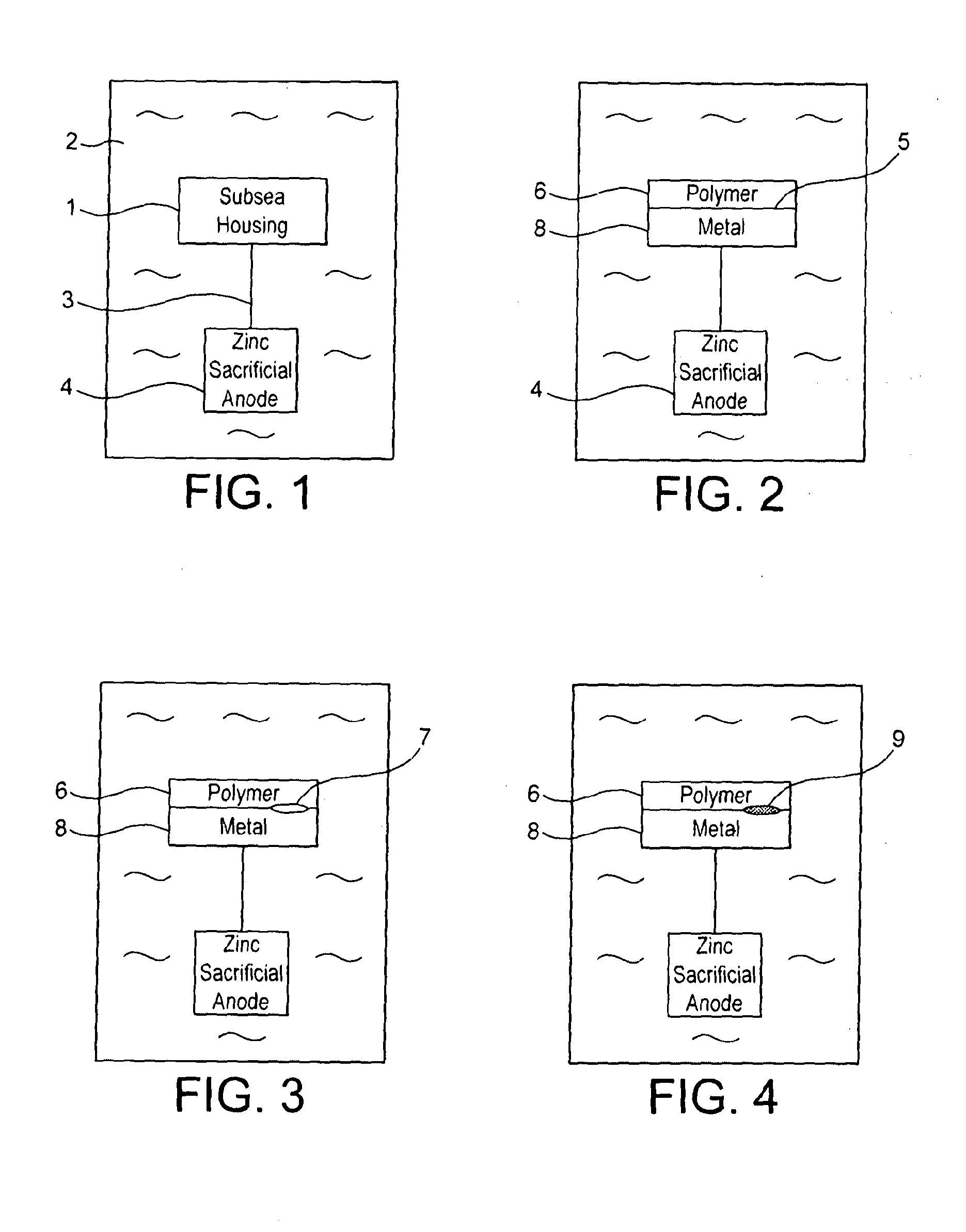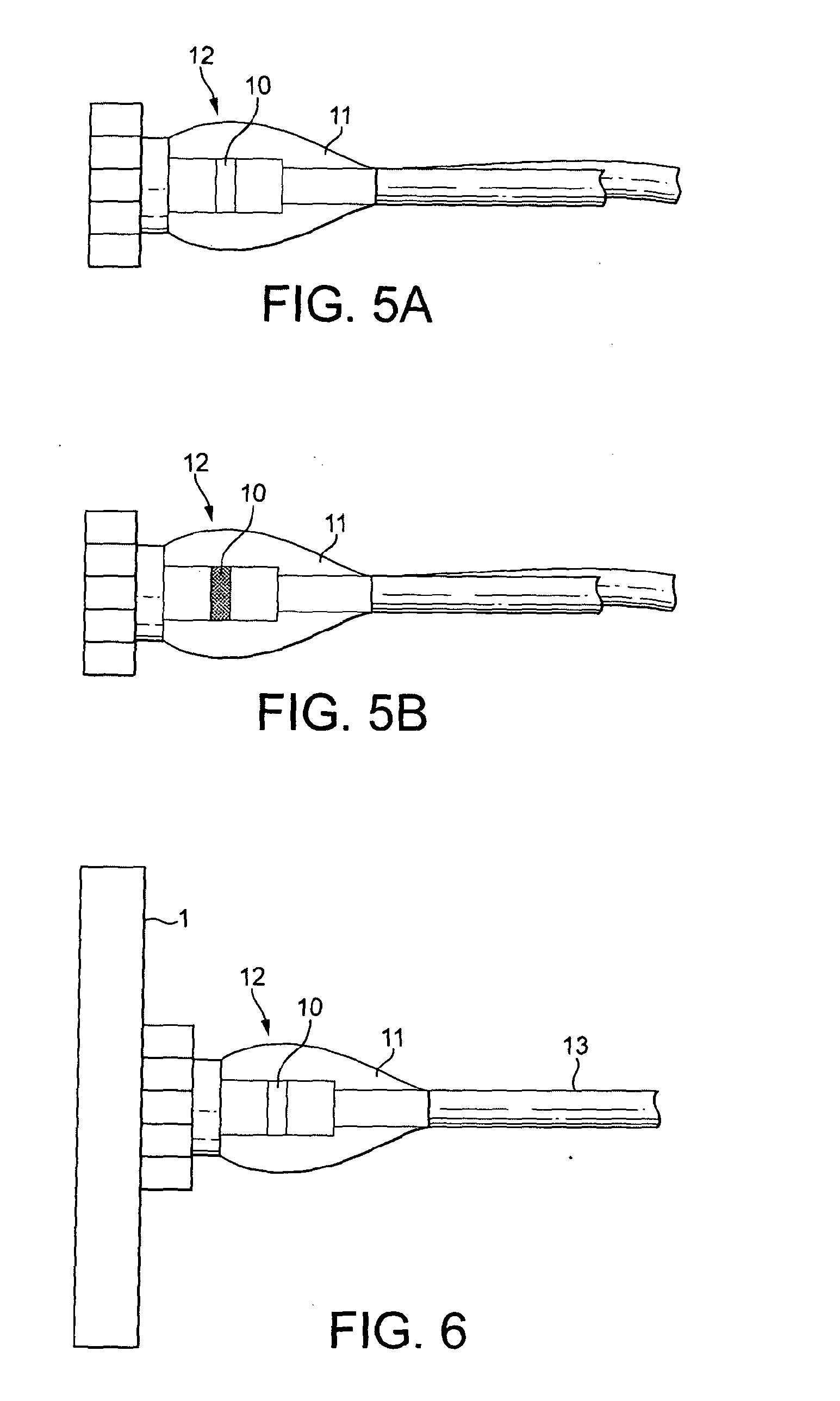Device and method for monitoring the condition of subsea parts, particularly cable connectors
a technology for subsea parts and cable connectors, which is applied in the direction of instruments, material analysis through optical means, chemical indicators, etc., can solve the problems of corroding without preventative measures, more active metals (the sacrificial anode) to dissolve, and not electrochemically stable steel and many other metals
- Summary
- Abstract
- Description
- Claims
- Application Information
AI Technical Summary
Benefits of technology
Problems solved by technology
Method used
Image
Examples
Embodiment Construction
[0018]As previously mentioned, in seawater metal corrosion occurs because of the generation of a corrosion cell. FIG. 1 illustrates schematically a typical sacrificial corrosion cell. A subsea structure such as a housing 1, which acts as a cathode, is immersed in an electrolyte (seawater) 2 and is directly connected by some electrically conductive path 3 to a sacrificial anode 4, which is typically composed of zinc. Galvanic corrosion will cause the more active metal (the sacrificial anode) to dissolve. In a corrosion cell such as shown in. FIG. 1 the cathode 1 does not dissolve, so that the structure is protected against corrosion. However, protecting subsea infrastructure in this way can cause what is known as cathodic delamination, which is recognised to be a major cause of failure of subsea cables.
[0019]FIGS. 2 to 4 illustrates various stages in the onset of cathodic delamination of a subsea cable. In subsea cabling a metal connector 8 is usually protected from seawater by over-...
PUM
| Property | Measurement | Unit |
|---|---|---|
| Translucency | aaaaa | aaaaa |
| Polymeric | aaaaa | aaaaa |
Abstract
Description
Claims
Application Information
 Login to View More
Login to View More - R&D
- Intellectual Property
- Life Sciences
- Materials
- Tech Scout
- Unparalleled Data Quality
- Higher Quality Content
- 60% Fewer Hallucinations
Browse by: Latest US Patents, China's latest patents, Technical Efficacy Thesaurus, Application Domain, Technology Topic, Popular Technical Reports.
© 2025 PatSnap. All rights reserved.Legal|Privacy policy|Modern Slavery Act Transparency Statement|Sitemap|About US| Contact US: help@patsnap.com



